Incredible inventors and provocateurs of the building arts, Artificers are the newest class of 5E. However, that doesn’t mean that their spell list of around 100 doesn’t have good choices for you to pick up. This strange class can be nearly as potent as a Wizard when built correctly, so let’s go over some of those spell options to improve your spell-slinging.
The Artificer’s spells work similar to a Paladin or Ranger, in that they get magic slower than most casters—at about half of the pace. However, unlike those classes, Artificer gets cantrips, as well as immediate access to first-level spells. This lets them get off the ground much faster, though the other two classes have better weapon and armor proficiencies to back them up.
They also prepare spells like a Cleric, choosing from all options and can re-prepare from that list on the fly. Unlike Clerics, though, the Artificer suffers from a smaller spell list, meaning it’s all the more important to pick your shots.
The best spells for Artificer in DnD 5E by spell slot
Artificers have an intriguing mixture of offensive, defensive, and utility spells in their list. The spells that we note are ones of good use, especially to have ready right when a fight begins. However, their easy access to their entire spell list lets you handle multiple situations.
Best Artificer cantrips
Fire Bolt or Green-Flame Blade
The Artificer is in charge of doing relatively high damage with their cantrips, especially compared to other casters. Fire Bolt simply deals d10s of fire damage at a high range, while Green-Flame Blade adds Intelligence—and multiple d8s—to the total damage of a melee weapon attack.
Fire Bolt is a must-have for Alchemists and Artillerists, dealing consistent damage at a high range that procs your bonus damaging effect. Other spells like Acid Splash or Chill Touch could work, but when your goal is to defeat enemies, Fire Bolt gets the job done basically wherever you need it to.
Meanwhile, the melee archetypes of Battle Smith and Armorer (if your DM agrees that Thunder Gauntlets can be used for Green-Flame Blade) adore Green-Flame Blade. It deals so much additional damage, both to its first target and another nearby one. Even with Extra Attack, this cantrip usually keeps up or does better, as long as you have another target nearby.
Since you can normally only have one damaging cantrip, choosing one of these two is quite important.
Guidance
Out-of-combat cantrips are very important to guarantee your party’s success, and Guidance is the peak. Guidance simply adds a d4 to an ability check. This means you’re buffing an ally by about 2.5 through every cast of this spell.
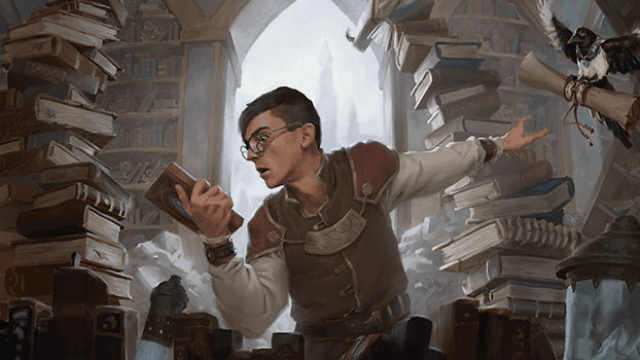
This has very little utility in a fight. An action to add just a d4 is not worth much, and there are other stronger spells you can use to guarantee grapples. No, this is an out-of-fights machine. Put this on anyone that you think will be making impactful rolls soon, like your Persuading Bard, and help them guarantee those rolls. Or your Rogue trying to pick a lock or disable a trap.
Prestidigitation
When you get three cantrips by level 10, it’s important to make the most of them. Prestidigitation provides minor magical effects, such as lighting a torch or producing a trinket. This allows the spell to softly impact a variety of situations, from entertaining children to distracting guards.
That is not to say it’s some sort of miracle spell. It’s just that you get so many magical effects that are handy and useful that it’s always worth considering. Cleaning stuff takes so much time otherwise.
Best first-level Artificer spells
Absorb Elements
Absorb Elements is an effective reaction spell that halves elemental damage and then improves the next melee attack you make.
The important part of this spell is absolutely its resistance. Halving elemental damage can keep you safe from so many different situations—casters, dragons, and elementals alike all use elemental damage to do massive amounts of damage to others. Being able to halve the damage on a whim is extremely potent.
The extra elemental damage is usually not important. A d6 is far from bad, but it’s melee-only, meaning only the Armorer and Battle Smith can realistically use it. And dealing elemental damage to a target that did that same elemental damage to you will usually run into elemental resistance or immunity.
Keep your eye on that halving elemental damage. You’re not negating the Fireball, but you’re coming really close.
Sanctuary
An impressive use of concentration, Sanctuary shrouds a nearby character, forcing enemies to roll a saving throw or not be allowed to target that person.

At a glance, this spell isn’t terribly potent. The effect goes away if the Sanctuary Benefactor attacks or casts an offensive spell.
However, by casting this spell on someone who just acted, you can force melee enemies into an awkward predicament—a Wisdom save or lose their attacks. Most other types of attack have very good range and thus largely ignore Sanctuary, but shrouding specific party members—like a Sorcerer with metamagic available—can keep them safe until their turn comes up, and they can cause some havoc.
Use the initiative to your advantage, and watch this spell keep your party exceptionally safe.
Best second-level Artificer spells
Aid
Aid grants five HP to three creatures for the duration of the spell. This spell is guaranteed to heal for 15 HP over three creatures, making it more consistent than Cure Wounds. It is also made at a range and can be cast at the beginning of the day to simply buff allies. The bonus lasts eight hours, making it easily capable of lasting the entirety of an adventuring day.
We recommend using this as a solid heal in emergency scenarios. The Artificer does not get Mass Cure Wounds or Mass Healing Word, meaning this is your area-of-effect healing option. Then, the bonus will last all day, making health pools more effective.
A simple and inoffensive spell, but one that a support caster should highly consider.
Web
Handling multiple creatures is one of the ways an Artificer can benefit a party, and Web is one of the best crowd-control options out there, restraining targets who fail a saving throw and preventing them from moving. Restrained is a devastating status for any character that relies on weapons—and puts those who don’t rely on weapons in mortal peril.
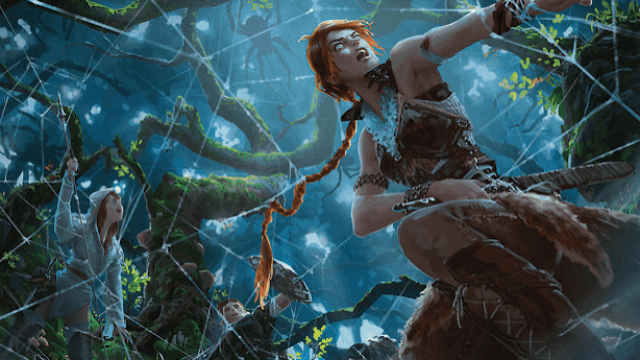
In addition, failing this saving throw causes the targets to need to roll a Strength check—not a saving throw—to escape from the spell. Extremely hard to escape from, though lighting it on fire turns it from effective crowd control to a very minor—but guaranteed—area-of-effect damage option.
Best third-level Artificer spells
Ashardalon’s Stride
A unique spell shared on several lists, Ashardalon’s Stride allows the Artificer to improve their speed by 20 while dealing 1d6 fire damage to nearby targets. It also prevents opportunity attacks and is cast as a bonus action.

Especially on Battle Smiths or even Artillerists, this spell can deal impressive damage to a crowded arena with no saving throw allowed. And it scales well, improving by five feet of speed and 1d6 damage per extra level. A max level Stride can easily deal upwards of 15d6 during a crowded encounter without you spending an action.
Revivify
While not an obvious spell for Artificers, Revivify brings someone who died within a minute back to life. This has a material cost, but any price is worth paying to get a teammate back from the dead.
Losing a character is heartbreaking, and this spell is the point where party members don’t have to fear it quite as much. Even though you’re getting it much later than usual, it’s still critical to keep around. Especially if you think a fight will even be slightly hard. You don’t want to leave it up to chance, and if your only reviver dies, then you are the backup plan.
Best fourth-level Artificer spells
Arcane Eye
While damage is often outscaled on the Artificer spell list, scouting lasts forever. Arcane Eye produces an invisible eye that flies about and gathers info for you. You can cast this, send it into a dungeon, and you’ll likely fully explore the dungeon without a problem, even at level 13.
To deal with this invisible floating eye, enemies would need to find it and then cast Nondetection or Dispel Magic. And, hey, that’s one less spell being used on the important members of your party.
Meanwhile, you’ll get the info you need to swap out spells. Maybe you know that you’ll need Water Breathing due to how underwater the dungeon is. Or maybe the dungeon is quite clearly skewed to hate an element, and you can use Elemental Bane to really ruin someone’s day.
An excellent way to gather information, with very few strings attached.
Stone Shape
Stone Shape allows the casters to mess with a five-foot cube of stone material, shaping it to your preference. This goes from making them into simple shapes to just cutting a massive hole in a wall.
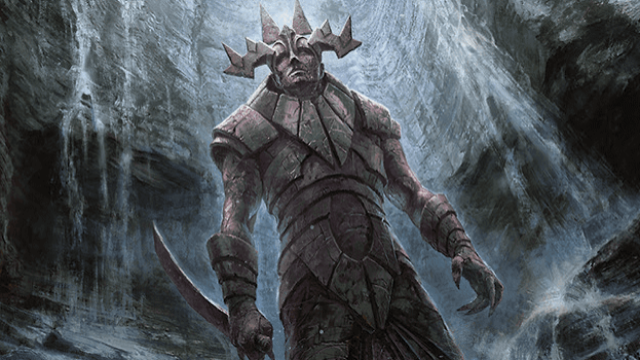
In reality, this spell gives you permission to skip one puzzle in a dungeon made of primarily stone. Cutting a hole in a wall is fairly universal unless the dungeon-maker was completely loaded. You’ll find ways to make this spell effective that your DM really won’t like.
Best fifth-level Artificer spells
Bigby’s Hand
At level 17, one might doubt the strength of Bigby’s Hand, but the spell’s versatility remains potent at any level. This spell gives you a potent bonus action that can either deal damage, shove people around, grab people, or grant AC and Dexterity saving throws to a target.
This spell does quite a lot of really surprising things. The average of 18 damage that it offers with each bonus action isn’t bad, and you can reduce this to around 12 if you want to grapple people instead. Half-Cover is far from bad, too, making this hand an extremely reliable way to burn bonus actions on a class that is otherwise reliant on archetypal abilities to do so. And Alchemists aren’t exactly drowning in bonus actions to begin with.
A very effective, friendly spell that will help at every point in a DnD 5E campaign.
Creation
Creation allows you to make anything you could want, as long as it fits in a five-foot cube. The item created can be made from vegetable matter, stones or crystal, precious metals like Silver or Cold Iron, Gemstones, or Adamantine or Mithral—the rarer the material, the shorter the spell lasts.
This spell has gigantic implications. It could be used to make keys, fold-out ladders, doors, padlocks, or more. The only real limits on this spell are your imagination and the five-foot cube.
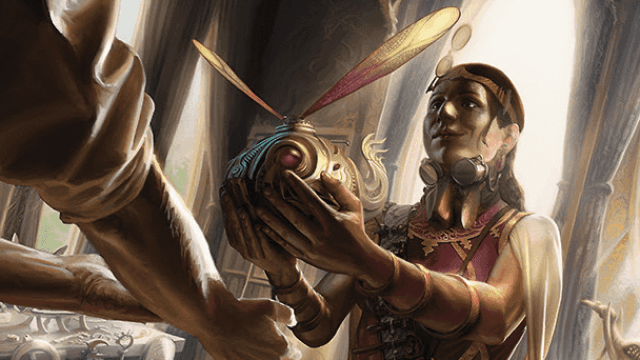
You can even make temporary weapons or armor to use Infusions with. For instance, you can make a Silver weapon before fighting a Werewolf and use Infusions to give it magical properties.
A really useful spell that is so in line with the Artificer’s MO—and one of my favorite problem-solving spells in general.
Honorable mentions
That being said, there are 100 spells on this spell list. Some are bound to be useful, if not at the tip-top of the tier list. Here are a few other spells to keep in mind as you level up.
- Cure Wounds is basically needed very early on to make sure you can pick people up when they’re unconscious.
- Faerie Fire is a good enough answer to invisibility that also gives an advantage to attack rolls.
- Tasha’s Caustic Brew deals good damage, lingers, and is one of Artificer’s few generic spell options for area-of-effect.
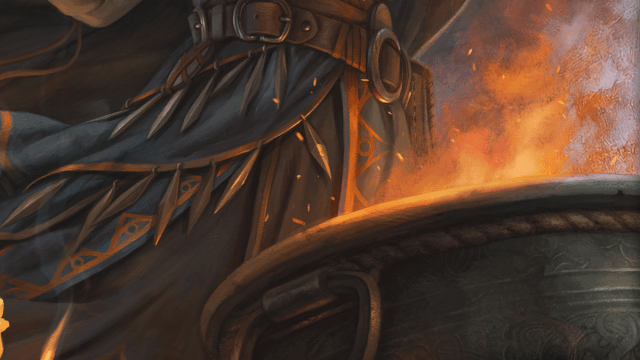
- Invisibility is useful for scouting or opening fights.
- Lesser Restoration is needed often, though if you need it, you can probably just prepare it on the fly. Still, some encounters will ask for this more than others.
- Vortex Warp lets you move allies into—or out of—the fray. Or you can put enemies in mortal danger.
- Haste is great in parties with heavy single hitters, like Paladins or Rogues, to help improve their damage. However, many martial classes benefit from another hit.
- Tiny Servant is a good enough Familiar for you, though it has good detection ranges and can, in the worst-case scenario, pretend to deal damage.
- Elemental Bane lets you combo with elemental damage types in your party, potentially turning a weapon that deals 1d4 fire damage into a massive threat.
- Otiluke’s Resilient Sphere is good enough crowd control, almost like a Banishment that doesn’t allow for a second save, though it targets a much more common saving throw and has size limitations.
- Greater Restoration restores many more status effects than its little brother, though you should be fine learning this on the fly rather than having it constantly prepared.
- Wall of Stone creates multiple high-health panels, which can be used to block up hallways, make bridges, or enclose a group of creatures.


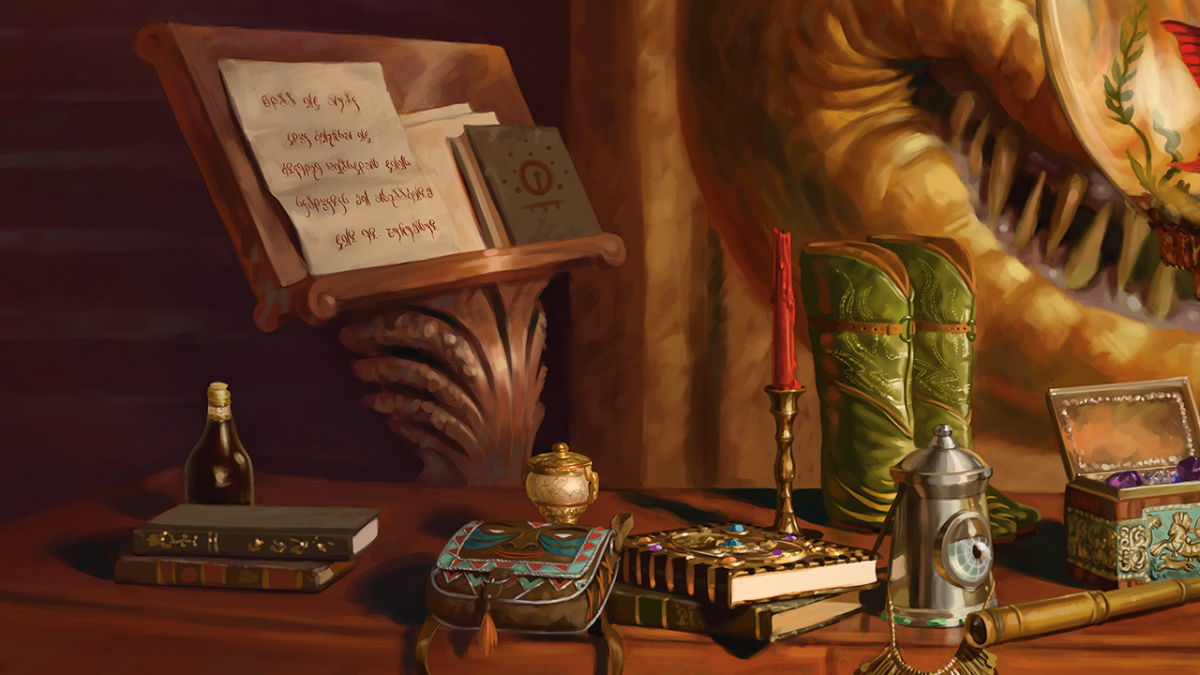
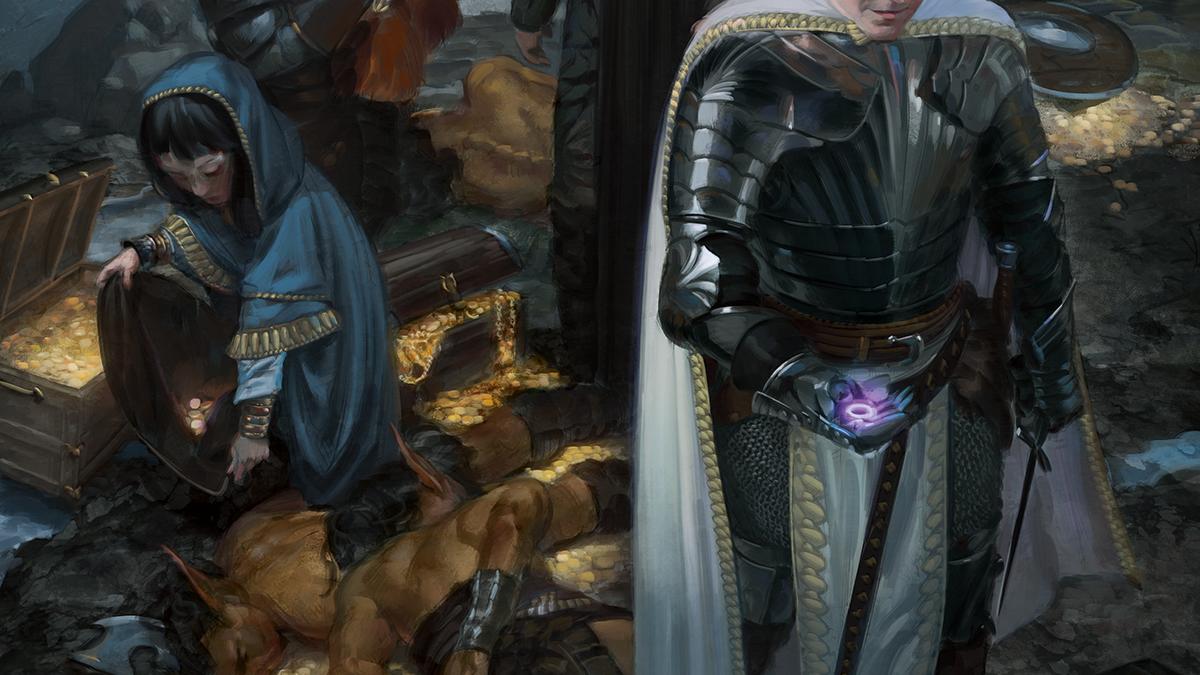


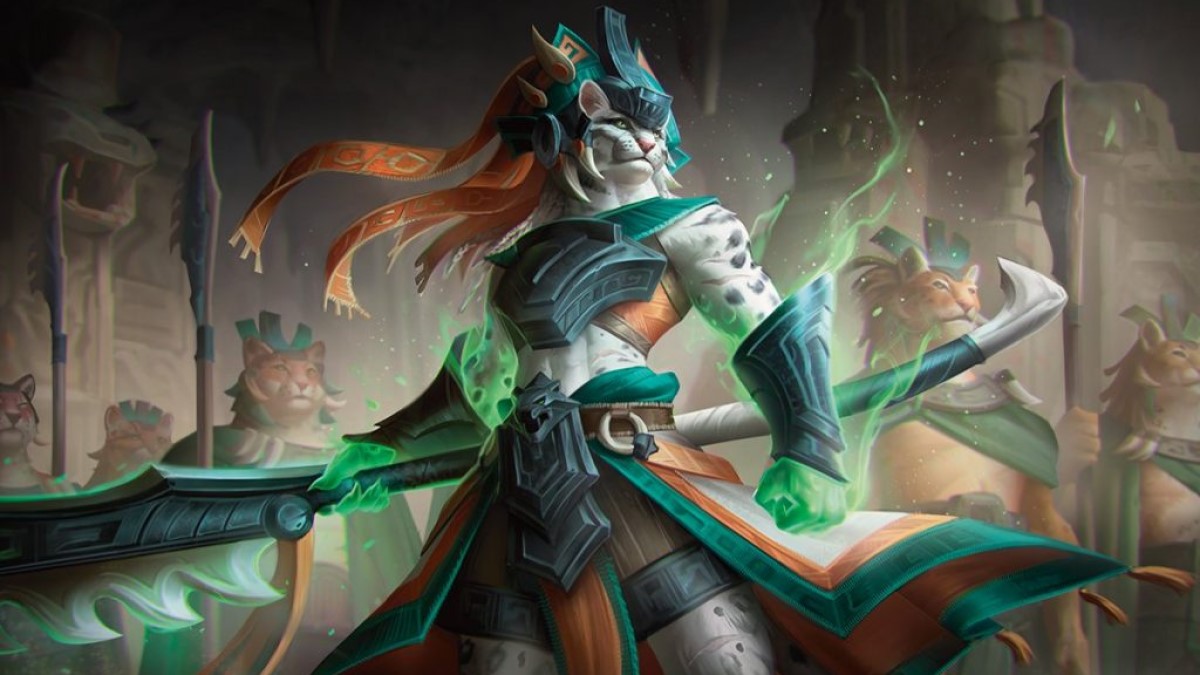





Published: Oct 1, 2023 07:08 am